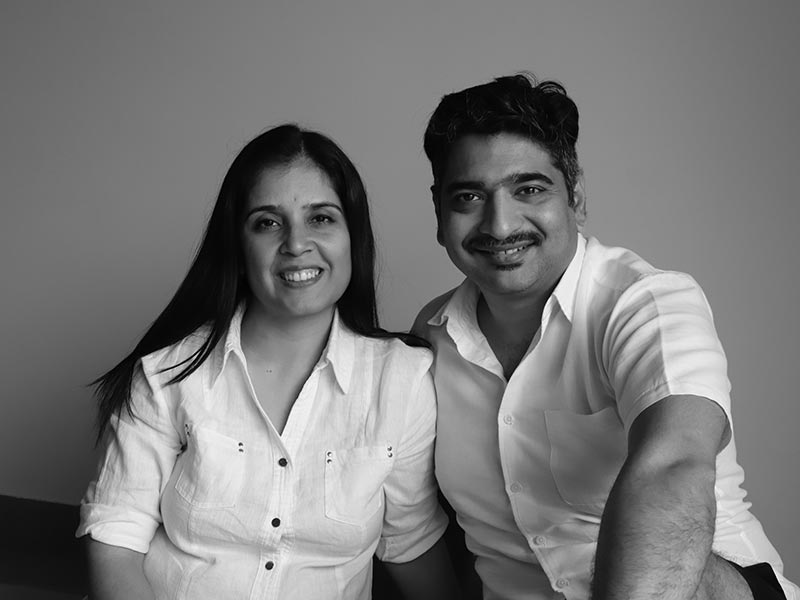How is the use of concrete evolving as an interior design material?
In the interiors, concrete is cast in-situ or used as a micro topping. Concrete is a neutral material, when casted in-situ, it acts as a backdrop to the interiors. It offers a permanent finish and ages beautifully. When used as a micro topping is acts as an evolving surface and it stabilizes over the course of time.
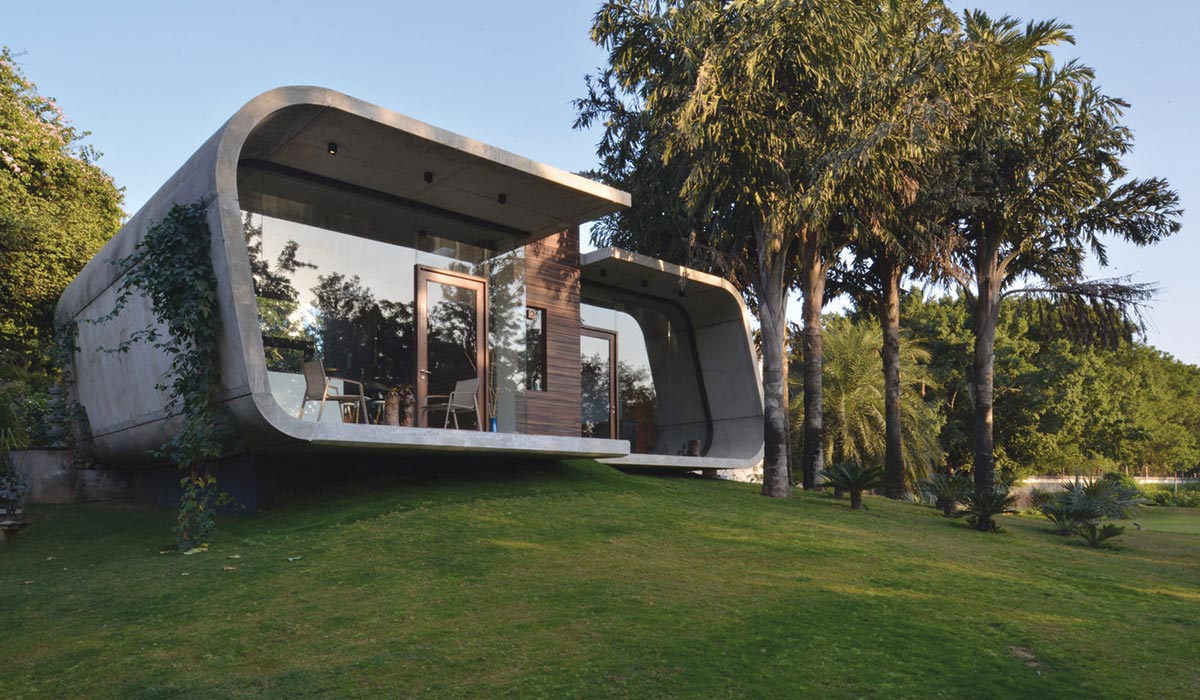 This striking avant-garde structure is made of pre-stressed concrete
This striking avant-garde structure is made of pre-stressed concreteConcrete has evolved to become part of all six surfaces of a room - not just in terms of structure, but in terms of its finish. Exposed concrete ceiling, concrete flooring, paneling on walls are being explored extensively. The use of patterns, textures and color pigmentation in the material is being experimented and widely applied.
Due to concrete’s characteristics as a strong, durable material, offering great potential for design, it is being widely accepted for both exteriors and interiors
Architects Priyanka Khanna & Rudraksh Charan
Concrete furniture like tables, kitchen countertops, etc are gaining popularity and concrete is also becoming a part of fittings like light fixtures, sanitary fixtures, and accessories. Concrete plug-and-play walls with inbuilt services are the future of interiors - where the wall acts as a service spine and at the same time eliminates the permanence of a layout.
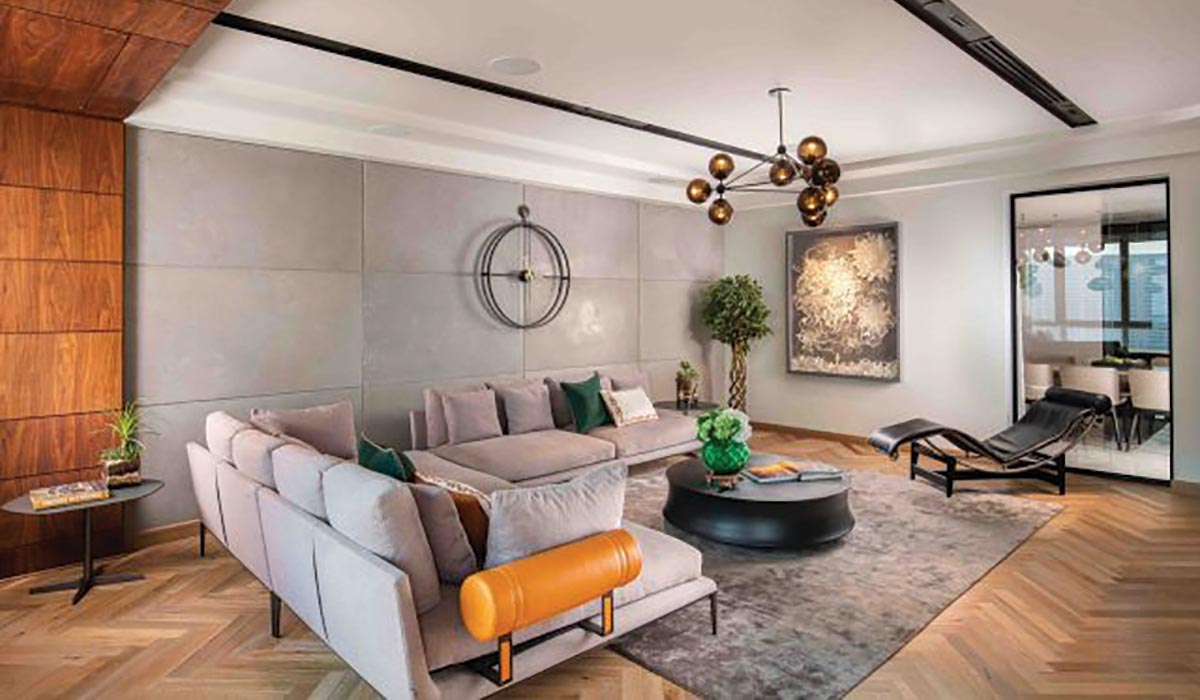 Concrete wall panels act as a perfect backdrop to the furniture
Concrete wall panels act as a perfect backdrop to the furnitureHow does concrete perform when used in interiors, including its characteristics, maintenance, and lifespan?
Concrete is no longer just a building material that revolutionized the construction industry, but a material that is being employed by designers to lend interiors and exteriors a unique sensibility and character. With its natural grey shade, it is being used to impart a sophisticated raw touch to surfaces. Its ability to be molded into any shape or form is a boon that has been used by designers to fashion some sensational structures.
Low maintenance and high durability have popularized the use of concrete in interiors. It offers a permanent finish. Its natural properties of scratch resistance, water and moisture resistance add to its durability.
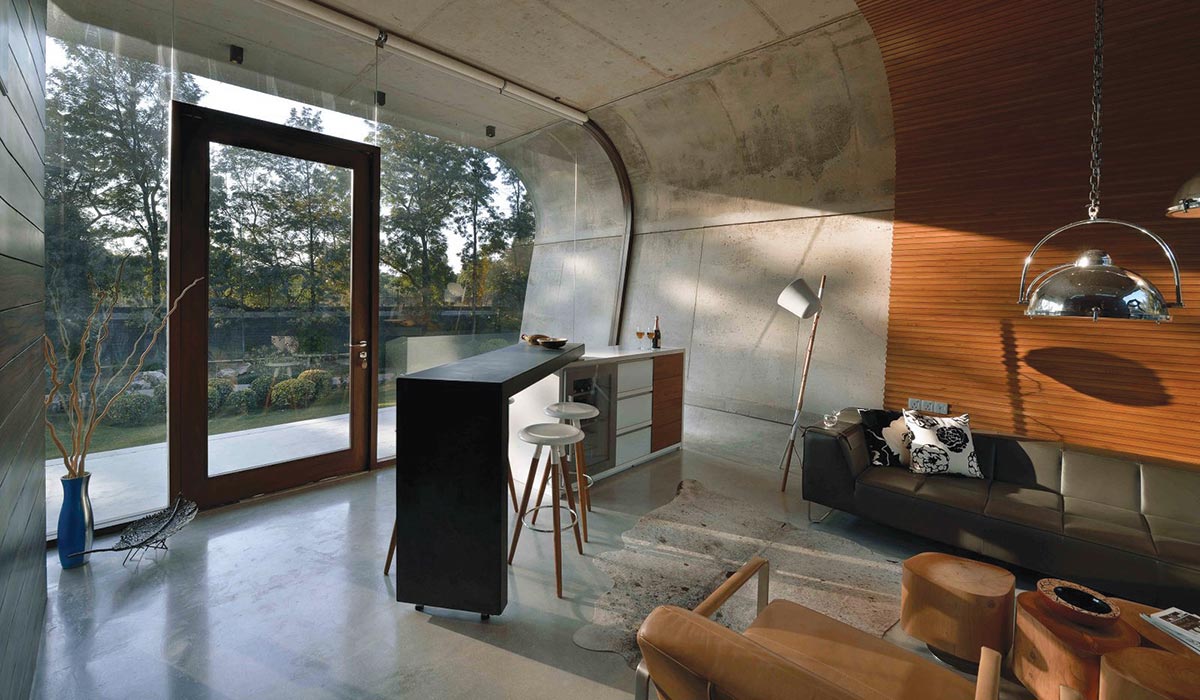 Concrete as a furniture component in the custom bar
Concrete as a furniture component in the custom barOften perceived as a dull material, what aesthetic value does concrete bring?
Concrete is like linen; it can be explored in terms of patterns and textures. It is earthy in its overall appeal. The color of concrete is cool and its very apt for interiors to bring a evolved sense of style. It maintains the bareness for the minimalist interiors, adds layer and structure to the industrial style, features curved walls for a free flowing, intuitive bohemian design. The aging and wearing of the material are also romanticized as acquired aesthetic.
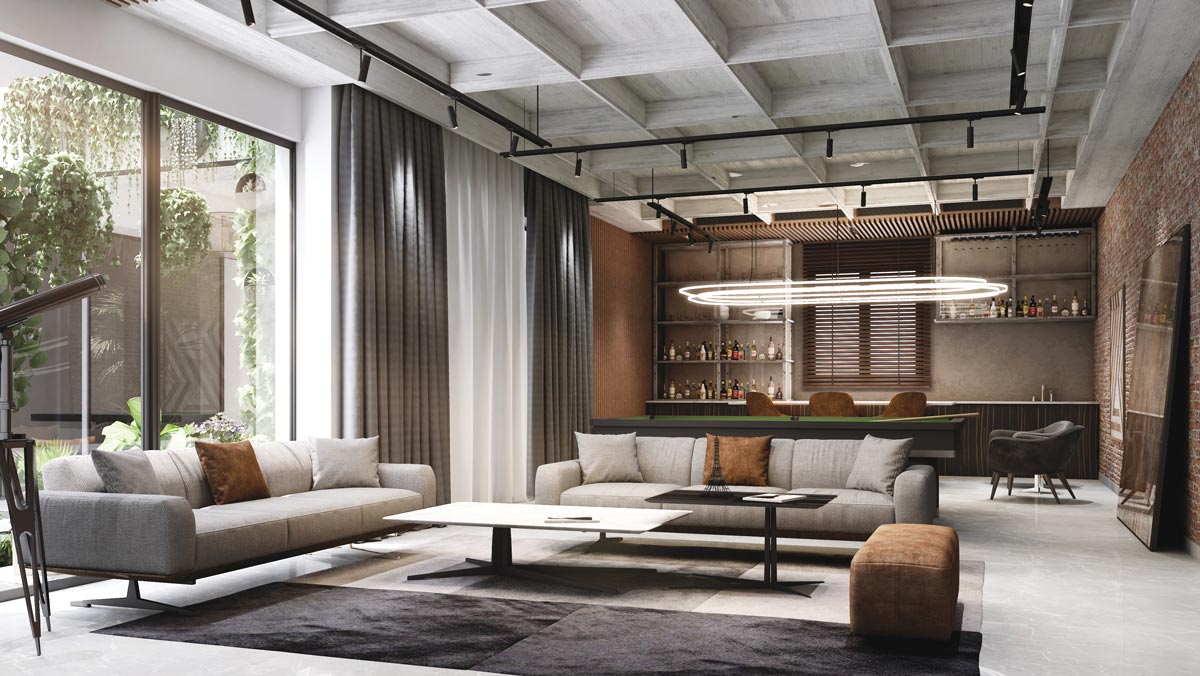 The coffer slab ceiling made of concrete allows a large, column-free span
The coffer slab ceiling made of concrete allows a large, column-free span
